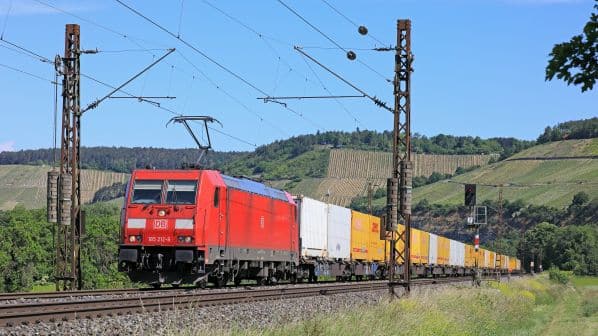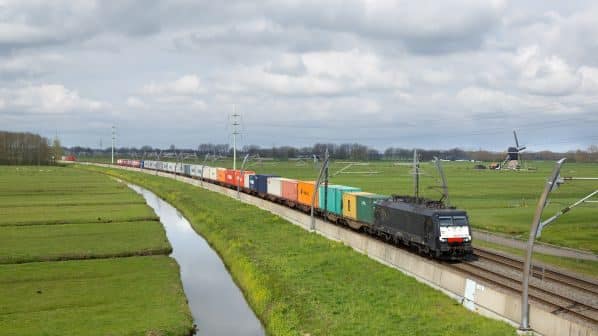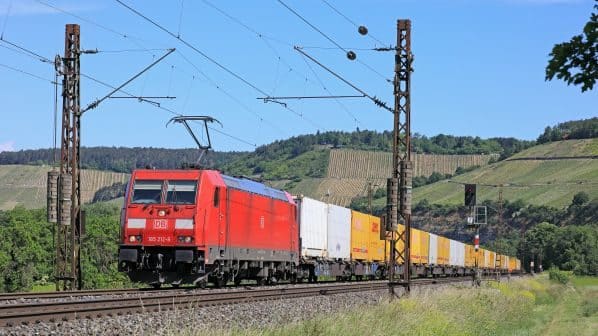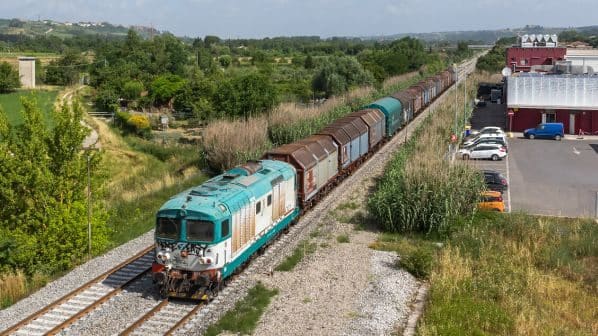THE CEOs of European freight operators have joined the European Union Agency for Railways (ERA), the Community of European Railway and Infrastructure Companies (CER), and the European Rail Freight Association (Erfa) to call for the implementation of “ambitious policies” that will “concretely foster” the movement of freight by rail.
“Rail freight is essential to accelerate the green and energy transitions and to reduce the European Union’s dependency on energy, especially on energy sourced from outside the EU,” says their joint declaration issued on March 29.
The declaration was signed by Ms Karima Delli, chairwoman of the transport and tourism committee (Tran) of the European Parliament; ERA executive director, Mr Josef Doppelbauer; CER secretary general, Mr Alberto Mazzola; and Erfa secretary general, Mr Conor Feighan.
A similar declaration calling for the relaunch of rail freight across the EU to achieve a modal share of 30% by 2030 was made in May 2020.
Rail’s share of the EU freight market remains at 16.8%. The signatories to the declaration believe that the 30% target only remains realistic if European institutions adopt an ambitious approach, given the heavy impact of the current geopolitical situation on freight operations.
As the EU may be entering a long-lasting period of energy shortages, and with the European Commission (EC) due to publish the Green Freight Transport Package in the second quarter of this year, the declaration calls on the EC and member states to address a range of issues.
On energy and CO2 emissions, the declaration says that the EC should explore a possible cap on charges for traction current for freight operators.
Member states should be allowed to reduce, waive or defer the payment of track access charges, possibly by extending the duration of Regulation 2020/1429 until December 31 2024.
This regulation was introduced following the outbreak of the Covid-19 pandemic and expired on December 31 2022.
The declaration also says that sufficient state aid should be provided through well-targeted schemes that ensure a level playing field for companies operating in a single market.
The Temporary Crisis Framework for State Aid introduced following the invasion of Ukraine allows member states to partially compensate companies for high energy prices, but the threshold of €100m applied to energy-intensive users is inadequate for rail, where some companies are expecting their annuals costs to increase by up to €2bn.
Considering rail and other modes, the declaration says that the EC should adopt a multimodal approach to important legislation such as the revision of the Road Vehicles' Weights and Dimensions Directive.
Changes to this directive should not be to the detriment of rail, and making future road trailer designs compatible with being carried by rail in terms of weight, dimensions and other criteria should become the default option.
Evaluating the benefits of longer and heavier trucks should be undertaken in a holistic manner, and not solely from the perspective of the road haulage industry.
The upcoming revision of the Trans-European Transport Network (TEN-T) Regulation should introduce standards meeting the needs of freight, including 740m-long trains, a 22.5 tonne axleload and the P400 loading gauge. There must be clear deadlines for implementation.
To enable “a technological quantum leap” for freight, financial support should be developed at EU level to assist operators with the deployment of ERTMS, Digital Capacity Management, the Digital Automatic Coupler (DAC) and dedicated digital tools for freight.
Member states should reduce track access charges for freight operators, while compensating infrastructure managers for loss of revenue where this occurs.
The declaration says that network capacity management should be market-oriented, taking into account the flexibility that freight operators require. A modern capacity management system should be developed, which is digital, flexible and secure.
Infrastructure managers should engage with operators in the capacity management processes. International coordination of infrastructure work that restricts capacity is “essential,” according to the declaration.
“Shifting from long-distance road to rail for distances over 700km could save 40 million tonnes of CO2 per year and increase rail's modal share for freight to 36% in the EU,” says Doppelbauer.
“These impressive figures provide a compelling call to action for informed and sustainable decision-making.”
“Whereas rail is nine times less CO2-emiting than road, rail is also, and perhaps more crucially, seven times more energy-efficient,” Mazzola says.
“While the EU is 58% dependent on external supplies for its total energy needs, it is now clear that energy consumption must become the default criterion in all policy initiatives.”
“We must also recognise that rail freight growth has stagnated over the past decade,” says Feighan. “It is therefore essential that there is a strong push now to ensure this legislative mandate is one that had a positive impact on rail freight. The current framework is clearly not meeting the needs of rail freight.”
“Rail freight has been left behind for years and it is vital to make it a matter of top priority,” says Delli.
“We call on the member states and the European Commission to address the current challenges effectively. I really hope our voice will be heard.”
The May 2023 edition of IRJ will include a detailed report on the current state of play for rail freight transport in Europe and the pursuit of targets for modal shift.




